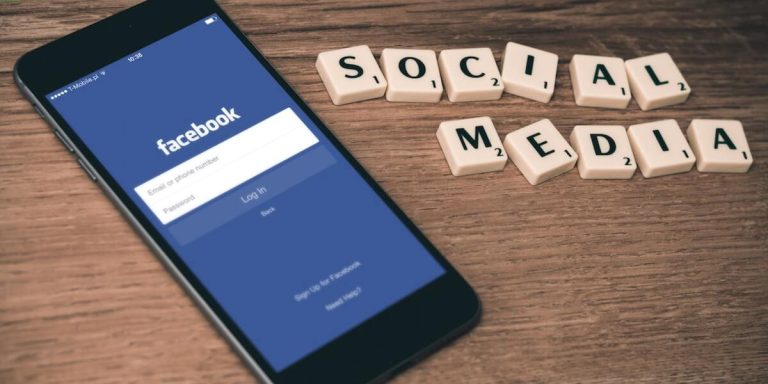Examples of Technology in the Classroom: An Insight into Modern Education Methods
In the world of ever-evolving digital advancements, educators are finding various examples of technology in the classroom to enhance student learning and engagement. From interactive whiteboards to virtual reality headsets- new technologies’ integration is transforming conventional teaching methods into a more immersive experience for students.
The onset of this trend has sparked an interesting debate among educationists worldwide: How does technology shape modern educational methodologies? This post will delve deeper into understanding how different types of tech tools can foster innovative pedagogical strategies that align with 21st-century learners’ needs and expectations.
Did you know?
Contrary to popular belief, a report by Stanford University suggests that technology in classroom settings can actually foster individual learning and critical thinking skills, enabling students to learn at their own pace.
Understanding Technology Integration in the Classroom
Today, technology integration is shaping up as a critical component of contemporary education. Its implementation involves aligning teaching methods with modern technologies to facilitate and enhance learning processes. The aim here isn’t just about equipping classrooms with advanced gadgets; it’s more about creating an innovative educational environment that encourages interactive lessons while promoting skills such as problem-solving, collaboration, creativity, and digital literacy which are highly sought after by employers in this age.
Take for example the use of Virtual Reality (VR) platforms or Augmented Reality (AR) tools. These technological devices transform traditional classroom environments into dynamic learning spaces that stimulate students’ imagination and engagement levels. Imagine studying astronomy where instead of reading textbook descriptions about planets or solar systems; students can wear VR headsets taking them on virtual tours across galaxies—this enhances comprehension through immersive experiences.
Then there’s Artificial Intelligence-powered Adaptive Learning Systems—a type of software that customizes instructional content based on a student’s specific needs—for instance if a child struggles understanding math problems then the system will adapt its method until they grasp concepts better thus reducing frustration whilst bolstering their confidence level ensuring no one lags behind due to difficulty grasping subjects at hand.
Key Components of Effective Tech Integration
Achieving effective technology integration isn’t as simple as supplying classrooms with modern gadgets. It’s a deliberate, thoughtful process that involves several key components.
Firstly, clear learning objectives are vital. Technology should not be used for its own sake; rather it must serve the curriculum and align well with set educational goals. Before incorporating any tool or application into teaching methods, educators need to define what they hope students will learn from using this technology.
Secondly, consider the accessibility needs of all students when integrating examples of technology in the classroom in 2023.. This entails selecting tools that can cater to different abilities and ensuring everyone has equal opportunity to engage digitally.
The fourth component revolves around student engagement – Use creative applications such as gamification have proven beneficial where pupils actively apply learned concepts through gameplay instead of just listening passively during lectures.
Measuring Success: Outcomes and Benefits
In the landscape of contemporary education, effective technology integration proves critical. When executed well, it doesn’t just decorate classrooms with high-end tools but fundamentally alters how learning takes place and amplifies students’ capacities to learn.
The key marker for successful tech integration lies in discerning its outcomes and benefits. Let’s explore prominent examples of technology in the classroom and how they’ve influenced educational success metrics.
1. Interactive Whiteboards: These are not mere replacements for traditional blackboards; rather serve as platforms encouraging collaborative tasks amongst children. The positive result?
Enhanced team-building skills which could be a pivotal outcome one aims through quality-tech integration.
2. Learning Management Systems (LMS): Advancements like Google Classroom or Moodle facilitate seamless sharing of study materials between teachers/students at any time or location – boosting flexibility & learner autonomy.
3. VR/AR Interactions: Virtual field trips enhance experiential learning while augmented reality games increase student engagement leading to higher attentiveness during lessons.
4.Language Learning Apps: Tools such as Duolingo have made mastering foreign languages more accessible- improving multilingual proficiency rates among students.
5.Digital Storytelling Software: Platforms like BookCreator help kids craft digital stories using multimedia elements- nurturing their creativity along with literacy skills.
Innovative Examples of Technology Used in Educational Settings
The modern classroom has come a long way from the traditional blackboard and chalk setup, thanks to advanced technological tools. Several innovative examples of technology integration in education have redefined teaching and learning experiences for both educators and students.
One such instance is that of Interactive Whiteboards (IWBs) which amplify student engagement levels tremendously by making classes more interactive. IWBs allow teachers to project elements directly from their computer screens onto the board, enhancing visual learning while promoting active participation due to real-time interaction possibilities.
Another transforming example can be seen with Learning Management Systems like Canvas or BlackBoard that not only make lesson planning efficient for teachers but also offer personalized access points for every learner – providing an organized platform where assignments are posted, collected, graded; discussions held; performance monitored – all under one roof!
As we navigate the 2023 digital landscape within our schools’ walls—technology continues reshaping ways pupils engage with lessons while equipping them better for future trends. Through these varied approaches towards “Technology Integration In Education”, today’s young minds receive quality exposure ensuring comprehensive skill development shaping up empowered citizens tomorrow.
Interactive Whiteboards Enhancing Learning Experiences
Interactive whiteboards remain one of the most transformative examples of technology in the classroom today. Being a staple feature for modern teaching methods, they offer an engaging and interactive platform that amplifies learning experiences for children.
In our digital age, it’s no longer efficient to depend solely on traditional blackboard-and-chalk techniques. Interactive whiteboards open up new avenues by facilitating seamless integration between educators and learners through digital content sharing. They can display images, texts, graphs or even play videos — providing visual stimulation that heightens students’ interest levels exponentially.
Moreover, these devices aid in simplifying complex lessons into digestible parts. For instance, attempting to explain how planets revolve around the sun is far more effective with animated images than mere verbal descriptions or static drawings.
A remarkable advantage lies within their ability to foster collaboration amongst peers. Unlike conventional classrooms where only one student answers at a time while others sit idle watching passively; with interactive whiteboards multiple hands can participate simultaneously – either directly from their seats using tablets/ smartphones or by coming forward physically onto board’s touch-sensitive surface itself!
Lastly but not least important- this innovative tool helps cater diverse learning styles too! Whether your child learns better visually (through diagrams), kinesthetically (touching things) , verbally (listening/ speaking); there are countless ways you could customize materials as per individual needs using multifunctional features offered by such boards.
Utilizing Educational Apps for Personalized Learning
Incorporating educational apps for personalized learning signifies a major shift towards technology integration in education. It also serves as one of the best examples of technology in the classroom, especially relevant to our experiences this year.
Educational apps have taken center stage in making sure that no child is left behind when it comes to attaining quality knowledge. These digital tools adapt and respond differently to each student’s individual needs, ensuring optimal outcomes while catering directly to their particular study patterns and pace.
For instance, language learning apps like Duolingo offer an interactive approach with lessons tailored according to user progress. Similarly, math-centric platforms such as Prodigy help children master mathematical concepts through game-based activities suited to their current skill level.
Additionally, certain multidisciplinary programs deliver comprehensive coursework across various subjects – Khan Academy being a well-known example. Here too are built-in feedback mechanisms which assess performance instantly and adjusts content accordingly – providing immediate personalization for learners at all stages.
The growth of augmented reality (AR) applications shines light on another formative aspect: immersive learning environments designed around “learning by doing”. Apps like Google Expeditions facilitate virtual field trips; these recreate real-world settings or even conjure complex systems within graspable 3D models—a transformative way towards understanding intricate details often missed out during textbook studies.
Strategies for Implementing Tech Tools into Education Curricula
As education systems continue to evolve, the integration of technology into classroom curricula has become increasingly vital. In this digital era, strategies for implementing technological tools have a significant impact on how students learn and develop essential skills needed in our tech-dominated world.
One strategy is fostering an environment that encourages interactive learning. With numerous edTech platforms available today, educators can leverage apps like Kahoot!, Google Classroom or Seesaw to encourage student participation and self-paced learning. These platforms allow teachers to create customized lessons aligned with individual learner needs – integrating quizzes, collaborative assignments or creating a virtual portfolio showcasing each student’s progress.
Moreover, an adaptive teaching approach using AI-powered educational tools can be effective as well. Tools such as DreamBox Learning offer personalized instruction based on learners’ proficiency and pace making it possible for every child to grasp concepts at their comfort level without undue pressure.
In conclusion, strategically incorporating these examples of technology in the classroom not only enriches students’ academic journey but also prepares them future-ready; ably equipped with competencies relevant beyond school settings. Emphasis should therefore be placed on providing quality teacher training sessions aimed at seamlessly merging traditional pedagogical methods with current technological advancements.
Teacher Training and Professional Development
As we delve into the integration of technology in education, it’s crucial to underscore the significance of teacher training and professional development. Why? Because teachers are at the forefront of this digital shift, steering our children towards a tech-savvy future.
For a seamless transition, educators need comprehensive training on how to incorporate different tech tools in their teaching methods effectively. This includes understanding various types software applications as well as hardware like tablets and smart boards that have proven beneficial for classroom instruction.
Examples of technology in today’s classrooms demonstrate positive outcomes when instructors skillfully apply these resources. For instance,
1. An English teacher integrating podcasts not only helps students improve their listening skills but also provides an avenue for authentic learning experiences.
2. Math lessons become less complicated with apps such as Prodigy which creates interactive games related to specific curriculum-based content.
3.Through virtual field trips offered by Google Expeditions, science classes transform into exciting explorations without leaving the confines of school premises.
– Workshops where hands-on sessions occur allow teachers to familiarize themselves through practical experience using varied forms technological platforms pertinent within educational settings e.g., Learning Management Systems (LMS).
– Webinars hosted by experts provide insights about recent trends regarding educational technologies thereby aiding them remain updated whilst preparing lesson plans involving contemporary resources available online.
Overcoming Challenges: Budgets, Resources, and Resistance
The digital age continues to revolutionize our world, making it crucial to integrate technology into education curricula to foster tech-savvy learners. Educators face challenges including budget constraints, limited resources, and resistance from stakeholders. To overcome these obstacles:
- Prioritize essential technologies for seamless integration.
- Seek grants and partnerships for funding.
- Offer training programs to familiarize educators with new tools.
- Engage stakeholders through open communication about the benefits of technological integration.
When faced with tight budgets for implementing examples of technology in the classroom, it’s essential to prioritize needs over wants. Start by identifying which technological tools or software will provide the most educational value for your students given your specific curriculum goals.
Next is resource availability. While some classrooms may lack enough computers or tablets for each student, there are cost-effective solutions available that can facilitate shared use across multiple classes and settings.
Consider using cloud-based applications that allow students to access their work from any device at home or school; this not only addresses potential equipment shortages but also eliminates barriers between parents and their child’s learning journey by giving them visibility into assignments outside of parent-teacher conferences.
Furthermore, overcoming resistance requires clear communication about how incorporating technology enhances traditional teaching methods rather than replacing them – pivotal ensuring onboard all stakeholders involved in nurturing childhood education today.
Parent involvement through PTA meetings can be instrumental here – sharing updates around successes achieved thanks to “technology integration” helps dispel doubts while rallying support towards positive change reframing ideas on modern-day schooling norms 2023-style!
Conclusion
As we’ve navigated through the various examples of technology in the classroom, it’s clear that integrating tech isn’t simply a modern trend but an innovative strategy to stimulate young minds. Technology has transformed education into a dynamic process where students can explore, question and understand concepts like never before.
Feel free to delve deeper on our website for more insights about childhood education and adept methods you as parents or educators can employ. It’s not only filled with supportive content dedicated to helping navigate your child’s academic journey effectively but also serves as an excellent reservoir of encouragement for passionate educators worldwide. Remember: mastering how best to use these technological examples is just one click away!







